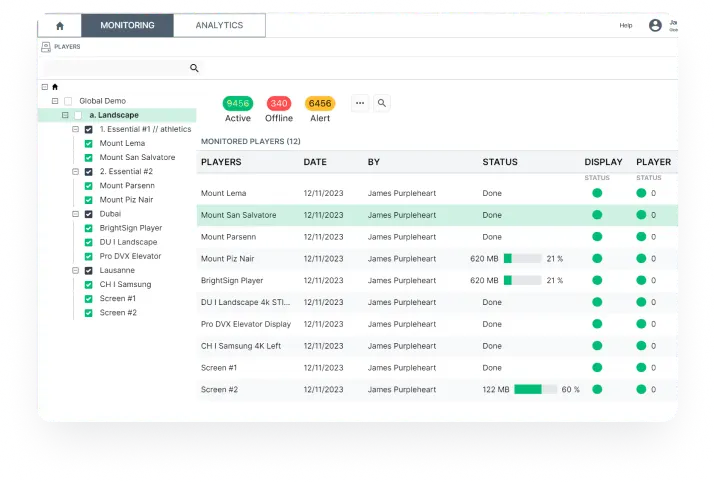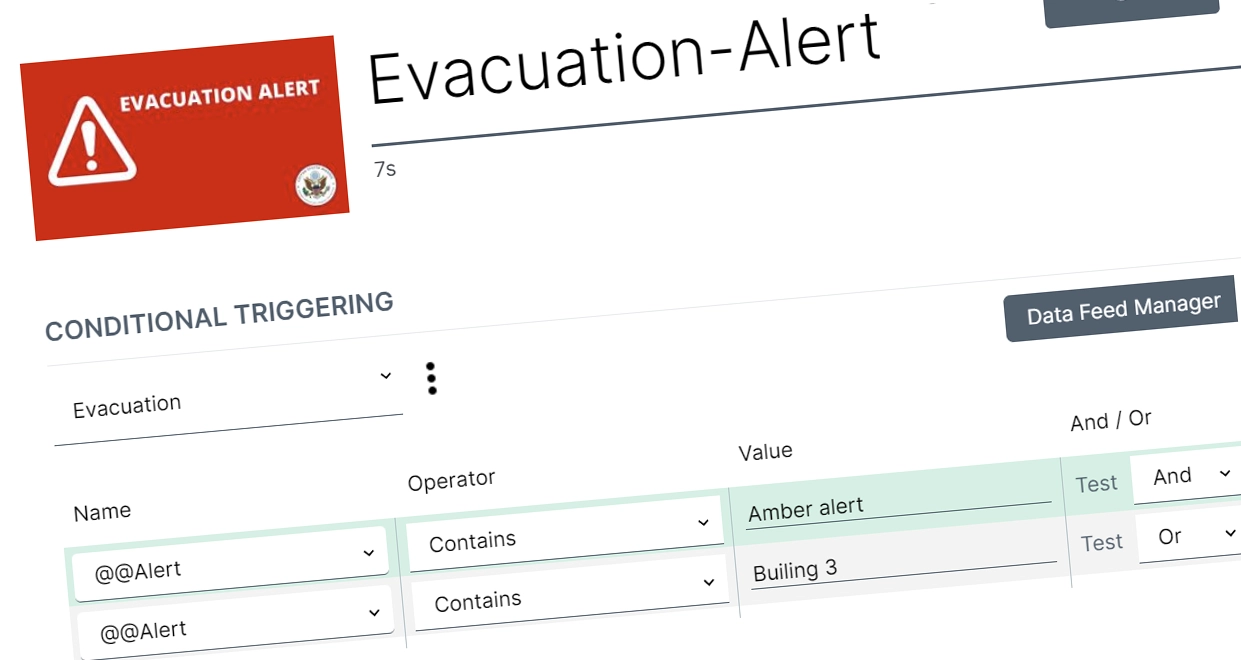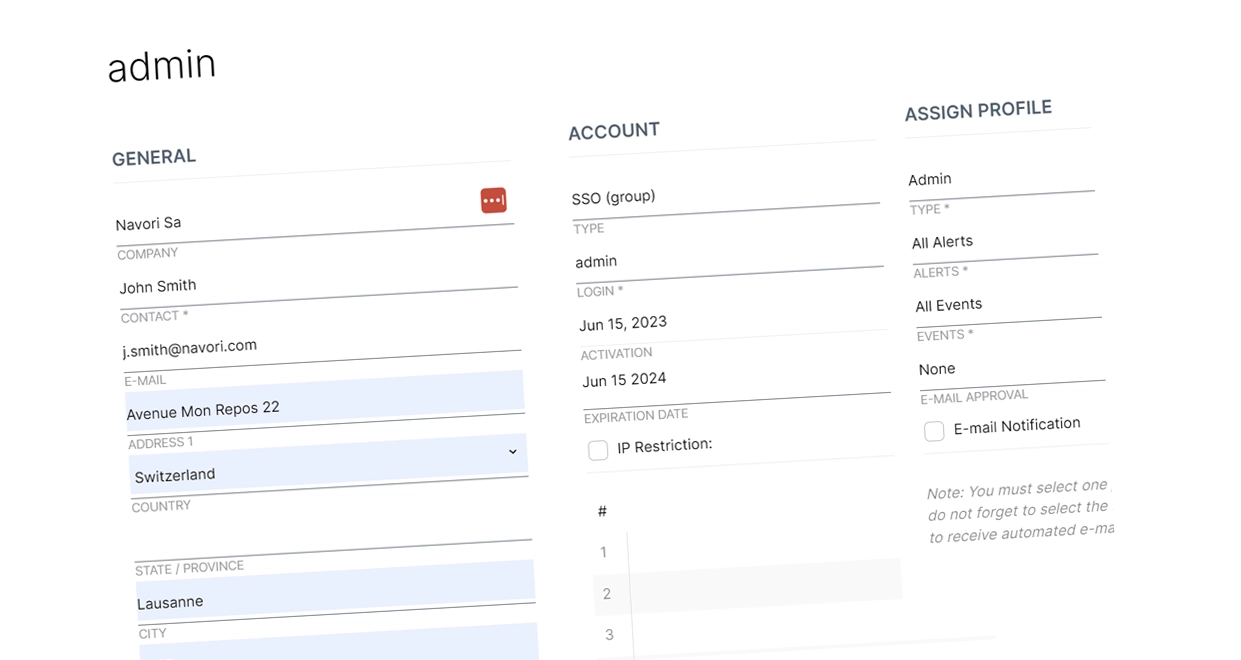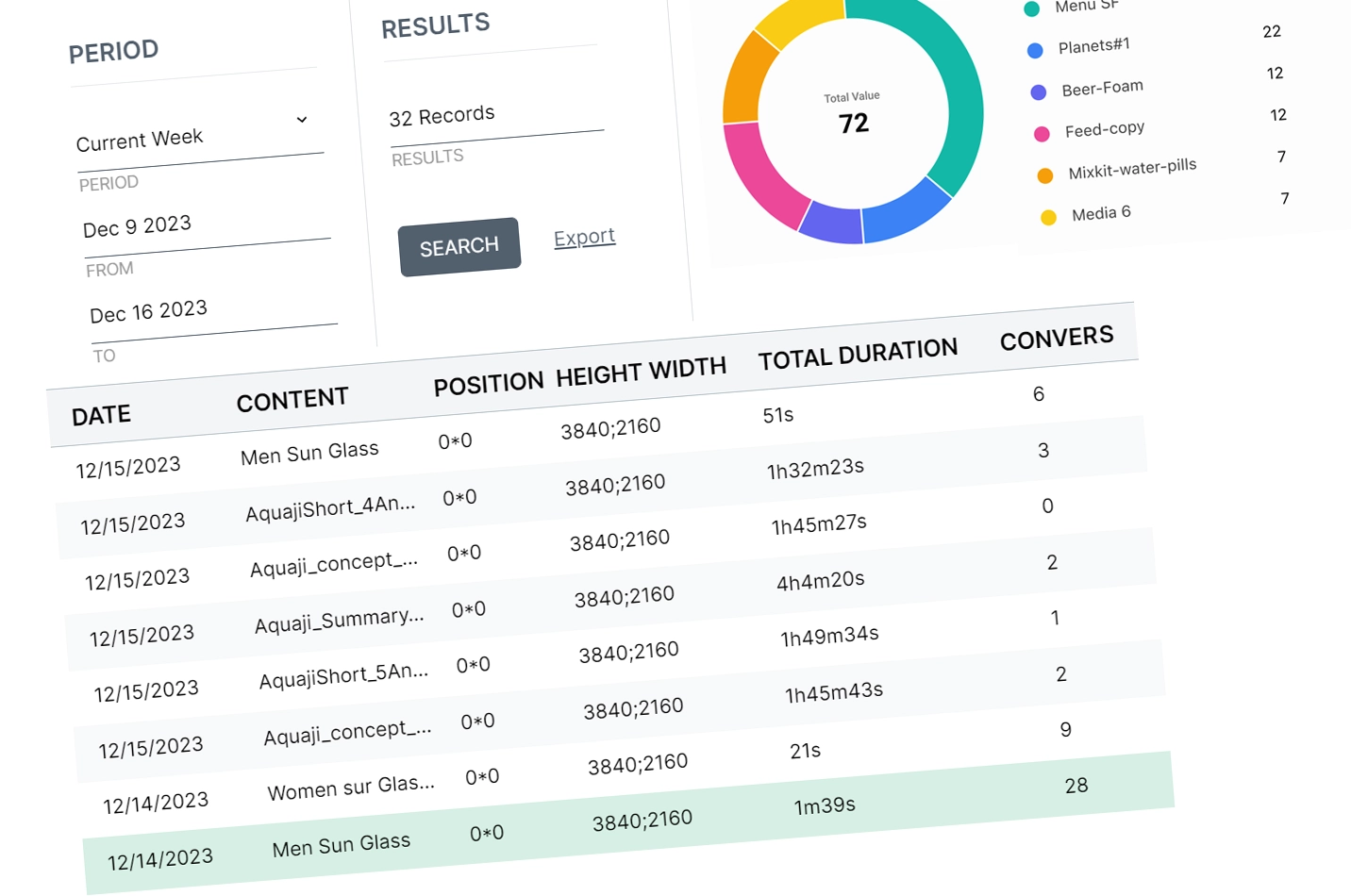A Modern Digital Signage REST API to Produce End-to-End Workflows
Uploading, organizing, and updating multimedia content like images, videos, or text to be displayed on digital signage screens.
Initiating, pausing, scheduling, or changing the content displayed on screens.
Monitoring and controlling individual or groups of digital signage displays or devices remotely.

Create your user interface
Utilize our REST API to create tailored user interfaces, enhance your Digital Signage with additional features, and seamlessly integrate third-party backend data for optimal workflow solutions.
Automate content creation from business-specific applications
Streamline your content creation workflows using our Digital Signage API: Automate content creation, dynamically update templates and attributes, and synchronize data feeds for enhanced business-specific applications.


Publish and maintain your network of players
Effortlessly manage players and networks: Mass-publish content, handle large-scale maintenance like screen control and updates and remotely automate player setup and activation.
Trigger content based on external data
Adapt content in real-time based on external data for personalized experiences. Set up evacuation alerts, display live wait times, and connect queuing systems, all controlled by data-driven rules.


Update your live data feeds
Revolutionize your network with advanced real-time data integration: Effortlessly publish data and graphics to thousands of players in a flash, craft connectors, and push custom data feeds into QL, ensuring that data feeds are updated instantaneously on the players.
Automate user provisioning
Integrating your ERP systems with Navori makes user provisioning easy. This enables the automatic creation of user accounts, simplifies subscription management, and sets views and roles without manual intervention.


Monitor your players from a third-party app
Enhance your existing systems with our monitoring data. Easily access detailed player and screen statuses, get a full view of user activities, and monitor Navori Server operations.
Extract analytics data
Enable informed decision-making with effortless data extraction. Generate periodic content playback reports with detailed statistics, obtain user activity insights, and produce platform availability metrics.


Integrate Effortlessly with our API Documentation
Unlock the full potential of our backend API for digital signage with our user-friendly and well-documented solution. Our API is designed to be integrated into your system, ensuring a smooth and efficient process for developers of all levels. Its simplicity empowers you to seamlessly incorporate dynamic content, real-time updates, and interactive features into your digital signage applications.
